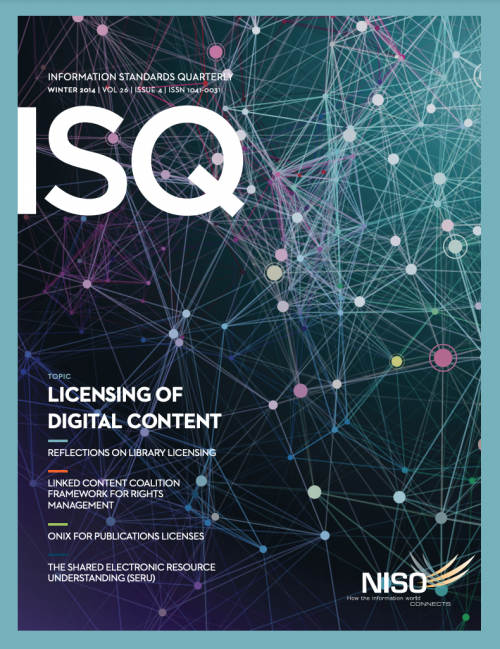Letter from the Editor
Licensing of digital content has been a complex—and contentious—issue since the advent of the first e-journal. While much understanding and experience has been gained since then, greater diversity in types of e-content and technology advances continuously add new challenges to licensing. Libraries are now acquiring e-books and adding streaming audiovisual and multimedia to their collections.
Publishers are issuing more granular content and supplementary material, both as separate products and as add-ons to existing products. Open access has exploded on the scene, including hybrid journals that contain both licensed and free material. Institutional repositories are growing by leaps and bounds. Libraries are increasingly using indexed discovery systems to search across all their e-content simultaneously. Universities are expanding their user base to remote-only students and even globally with MOOCs. And users are continuously inventing new ways to use, re-use, and mash-up content that neither libraries nor publishers could have envisioned at the time of license negotiation.
In this themed issue of Information Standards Quarterly on licensing of digital content, Ann Shumelda Okerson provides her Reflections on Library Licensing, describing both the advancements that have occurred in digital content licensing over the past decade and the remaining and new challenges that we need to address.
The Linked Content Coalition is a relatively new project created by a global consortium of media and publishing businesses joined with standards bodies and registries. While not explicitly about licensing, the identifiers and metadata related to usage rights that LCC expounds are critical to the ability for machines to manage, distribute, and display rights and licensing information. Todd Carpenter discusses how the group aims to make it possible to manage and access online rights information seamlessly across all types of media.
David Martin authors a standard spotlight on the ONIX for Publication Licenses specification from EDItEUR. While this standard has been around for over five years, several recent developments may help make its adoption finally take off.
NISO’s Shared Electronic Resource Understanding (SERU) recommended practice, presented as an alternative to a formal negotiated license, was updated in 2012 to expand its use beyond e-journals. Adam Chesler and Anne McKee review in SERU: Six Years and Still Going Strong, how this approach continues to grow in use.
Much progress has been made in processes, standards, and tools related to licensing of digital content, as this issue of Information Standards Quarterly illustrates. Much work remains to be done, though, in greater adoption of standards and to keep up with the ongoing changes in the ways content is delivered and used.
